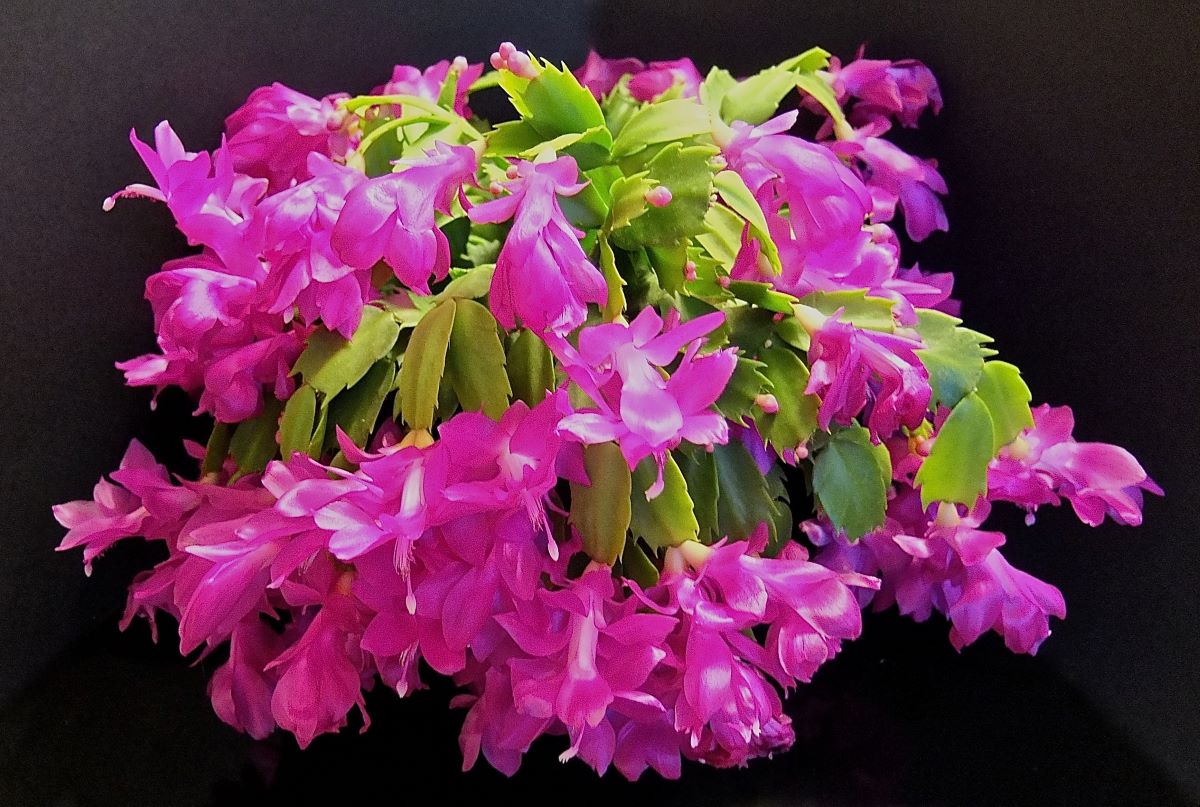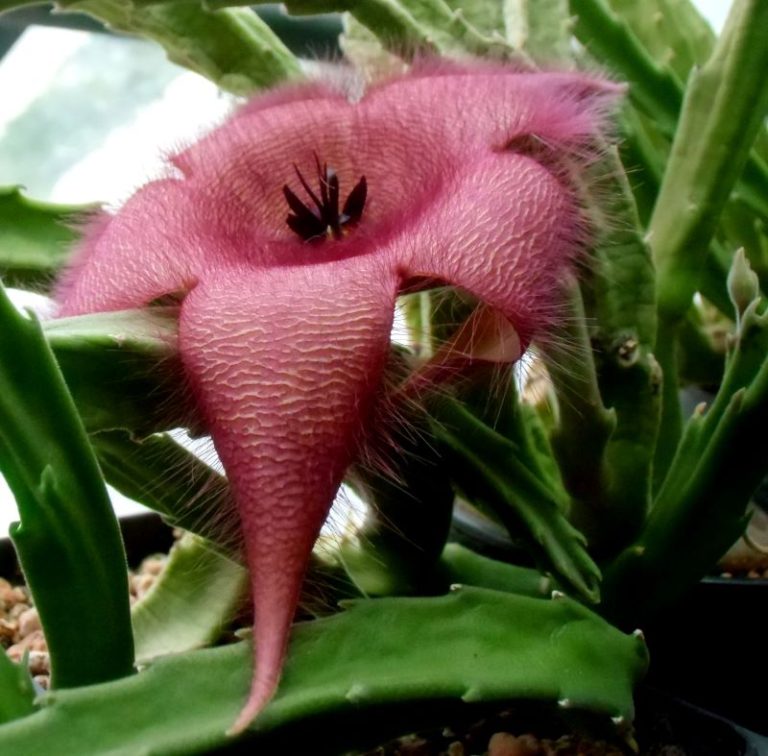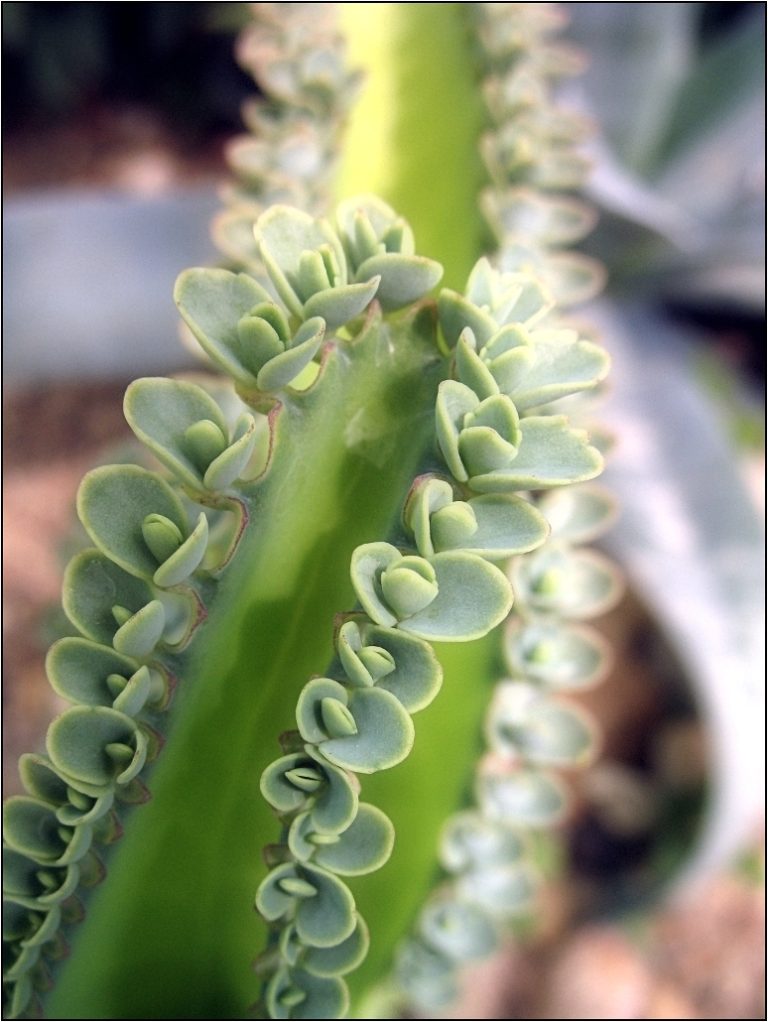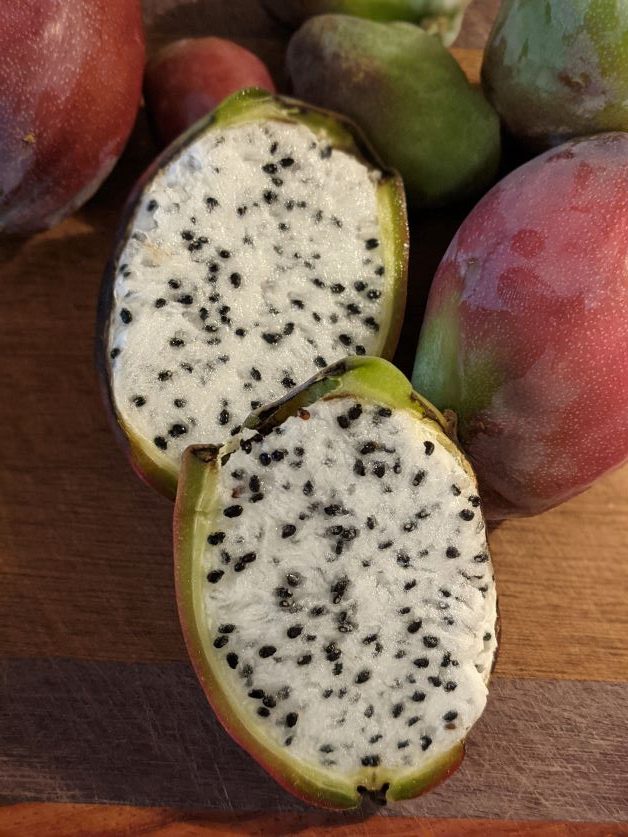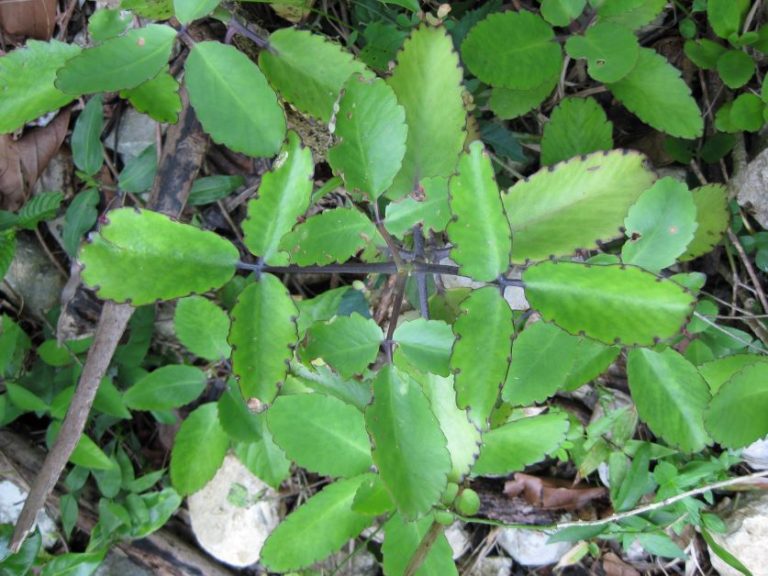How to Get Your Christmas Cactus to Bloom
Christmas cactuses (Schlumbergera) are a lot like poinsettias – we enjoy them for a month during the holidays and then neglect them to death come spring. It’s a shame, too – a well-cared-for Christmas cactus can live to be 20 to 30 years old. In fact, some people claim to have Christmas cactuses that are 100 years old!
You might be wondering how to get your Christmas cactus to bloom. Well, also like poinsettias, Christmas cactuses need a dark/light cycle in order to put out flowers. It’s not hard to get your Christmas cactus to bloom, but it does take a little know-how.
How to Get Your Christmas Cactus to Bloom
[table id=4 /]
Christmas Cactus Growing Conditions
When most people hear the word “cactus,” they think hot and dry. The Christmas cactus, however, is not your typical cactus. It’s native to Brazil, so that means it needs tropical conditions to thrive.
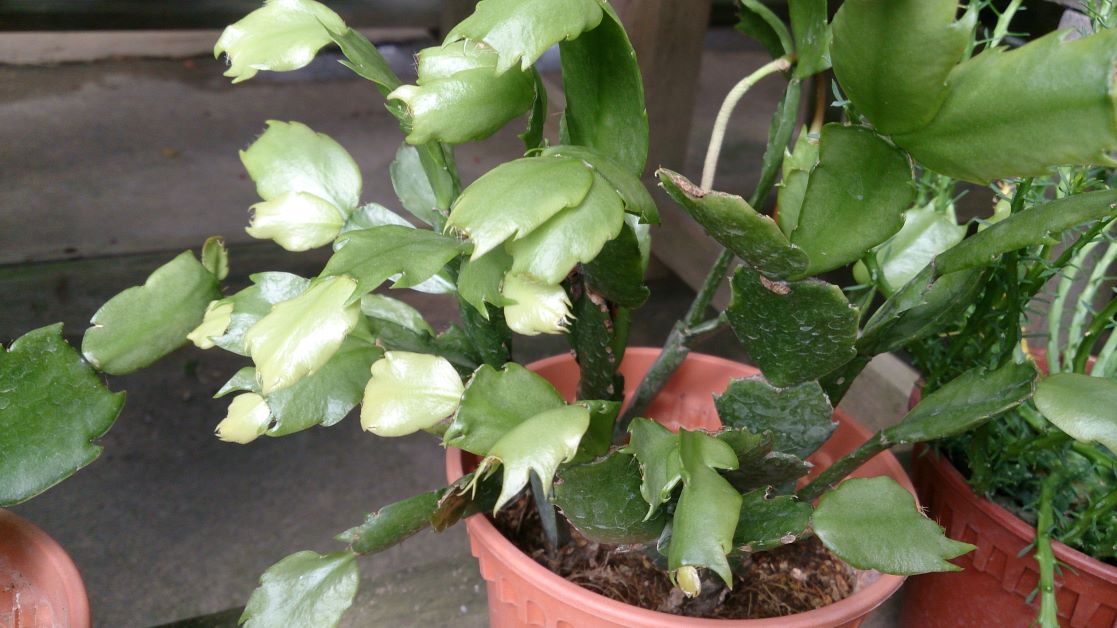 |
| Photo Credit: Mokkie, CC BY-SA 3.0 <https://creativecommons.org/licenses/by-sa/3.0>, via Wikimedia Commons |
Temperature
Christmas cactus doesn’t like extreme temperatures. It’s sensitive to frost but also dries out quickly if it’s very hot and bright. The perfect temperature for a Christmas cactus is 60F to 75F.
Light
Christmas cactus prefers indirect sunlight (most of the time). How much and how strong of light your Christmas cactus needs depends on whether it’s in its dormant phase or blooming phase.
Water
How much you water your Christmas cactus depends on the time of year, your climate, and whether you’re keeping your cactus indoors or outdoors. Follow the Christmas cactus calendar of care in this article, but also keep an eye on your cactus. If it looks like you’re over or under-watering, adjust your watering as needed.
Using a breathable terra cotta pot can help you promote airflow and keep your soil at the right moisture levels. If you’re using a dish underneath your potted plant, make sure to drain any standing water to stop your Christmas cactus from getting “wet feet.”
Christmas cactus prefers to be a little pot-bound, so choose a container that’s on the smaller side.
Soil
While Christmas cactus isn’t super picky about the soil it’s grown in, cactus mix is best because it provides the right amount of drainage.
Another benefit to using a cactus mix is that it will already be at the correct pH level. Christmas cactus prefers slightly acidic soil between 5.6 and 6.0.
How to Fertilize a Christmas Cactus
Using organic 15-30-15 fertilizer, feed your Christmas cactus during the times specified in the Christmas Cactus Calendar of Care.
Indoor Christmas Cactus Care
Christmas cactus makes for a great houseplant. It doesn’t like super bright light, and the standard 72F room temperature is right in the middle of its ideal range. Just be sure to keep your cactus away from drafty doors or AC vents.
Christmas cactus also likes humidity, and the air in most people’s homes is dry from running the AC or heater. To create humidity for your Christmas cactus, put some pebbles in your draining dish, underneath your terra cotta pot. The pebbles will help excess water evaporate around your cactus, creating a little dome of humidity.
Can You Keep a Christmas Cactus Outside?
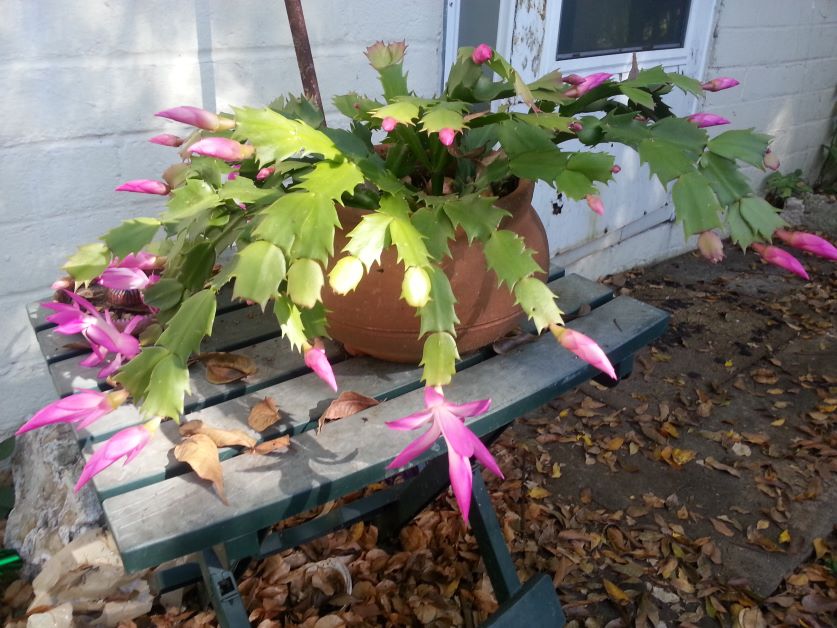 |
| Photo Credit: JennTM, CC BY-SA 4.0 <https://creativecommons.org/licenses/by-sa/4.0>, via Wikimedia Commons |
If you’re in USDA zones 9-11, you can usually leave your Christmas cactus outside year-round. If nighttime temperatures are forecasted to dip much below 50F, you may want to bring your Christmas cactus inside. It definitely isn’t tolerant to frost.
Gardeners outside of the subtropics can (and should) keep their Christmas cactus outside during the summer. It’s important, though, to give them some protection from the harshest rays of the summer sun. Put them in a spot that gets a few hours of bright morning sun, but give them indirect light or partial shade for the rest of the day.
If you keep your Christmas cactus outside, you may need to water it more often. Keep a close eye on your plant and water more often it starts to suffer.
How to Propagate a Christmas Cactus
Christmas cactus is very easy to propagate. Find a healthy stem and cut it where 2 segments meet. Keep your piece 2 or 3 inches long. Set the cutting aside and let the bottom heal over for a couple of days. Once the cut end is dry, put it cut side down in a pot filled with cactus mix and water it in. You only have to plant it about an inch deep.
Why is My Christmas Cactus Dying?
The most common reason why your Christmas cactus is dying is overwatering. Always let your Christmas cactus dry out completely between watering. A moisture meter can help take the guesswork out of maintaining a watering schedule.
Signs of an Overwatered Christmas Cactus
- Limp or rotting stems
- Stems falling off
- Bad smell
- Fungus gnats
It’s also possible to underwater your Christmas cactus. It’s a tropical plant, which means it’s not drought-tolerant.
Signs of an Underwatered Christmas Cactus
- Shriveled stems
- Pale or red stems (could also mean too much direct sunlight)
Christmas Cactus Pests
Thrips, fungus gnats, spider mites, mealybugs, and scale are the most common pests for a Christmas cactus.
Why Are My Christmas Cactus Buds Falling Off?
Christmas cactuses can be finicky when it comes to blooming. More than likely, your blooms are falling off due to incorrect watering. It’s also important to slowly acclimatize your Christmas cactus If you’re moving it outdoors from indoors. Don’t put it into direct sunlight right away – keep it somewhere it can have some protection from the sun, like your carport or under a big tree.
First photo credit: Alan Peacock

